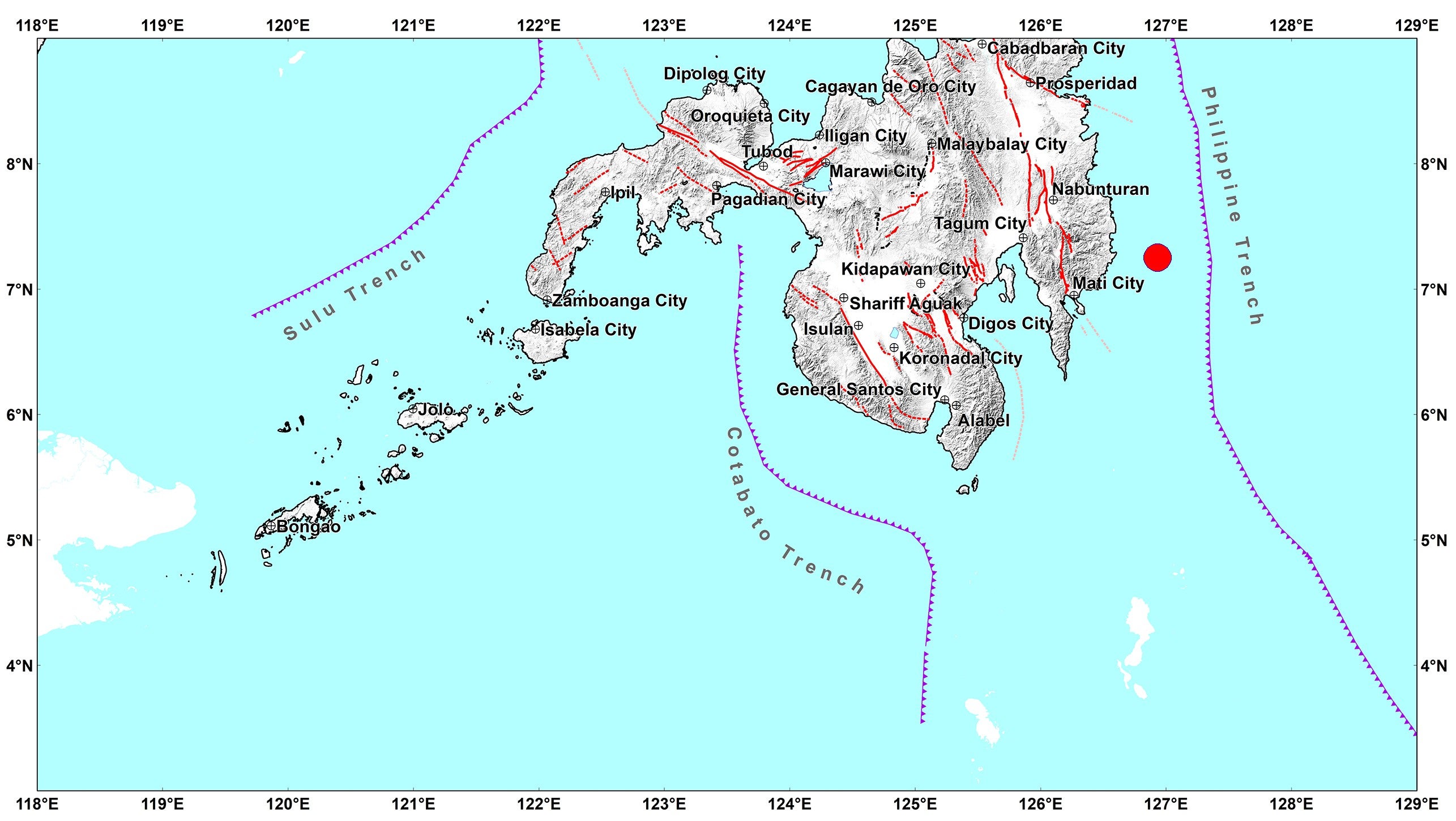A powerful offshore earthquake struck the southern Philippines on Friday morning, triggering tsunami warnings across parts of Southeast Asia and leaving at least two people dead, officials said.
The 7.4-magnitude tremor hit at 9.43am local time (01.43am GMT) in waters off Manay town in Davao Oriental province, at a depth of about 23km, according to the Philippine Institute of Volcanology and Seismology (Phivolcs). The agency said aftershocks were expected.
The Pacific Tsunami Warning Centre initially warned of waves up to 3 metres along some Philippine coasts, but later said the threat had passed. Tsunami alerts remained in place for Indonesia and Palau, where waves of up to one metre were possible.
Civil defence official Raffy Alejandro confirmed the first fatality and said teams were assessing reports of damage to homes, buildings, roads and bridges near the epicentre. “We are asking residents in coastal areas to remain alert until all warnings are lifted,” he said.
Philippine President Ferdinand Marcos Jr said search-and-rescue teams were being prepared and would be deployed when conditions allowed.
“We are working round the clock to ensure that help reaches everyone who needs it,” he said in a statement.

Richie Diuyen, a disaster official in Manay, said the quake lasted 30 to 40 seconds and was the strongest she had ever experienced. “We couldn’t stand earlier,” she said by phone. “The damage is quite big.”
Videos shared from Davao City showed workers sheltering under desks as walls creaked and cabinets toppled. Local authorities in nearby towns suspended classes while checking public buildings.
The United States Tsunami Warning System said hazardous waves were possible within 300 kilometres of the epicentre. Indonesia issued warnings for its northern Sulawesi and Papua regions.
Davao Oriental governor Edwin Jubahib told local radio: “Some buildings were reported to have been damaged. It was very strong.”
The quake was among the most powerful to strike the Philippines in recent years. The country sits on the seismically active Pacific “Ring of Fire” and experiences hundreds of tremors annually.
It comes less than two weeks after a magnitude 6.9 quake in Cebu province killed at least 74 people and displaced thousands, marking the nation’s deadliest earthquake in over a decade.







